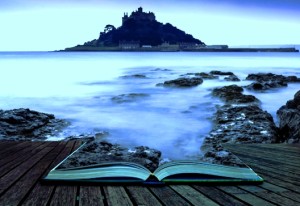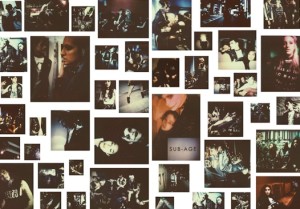Most of us pretty much know that the path to creating a film is very arduous, complicated, and time-consuming, and oftentimes costly. There are many steps and many processes to work through. For me the most difficult, but most fun and challenging, is in taking the written words of a screenplay and figuring out how to fully realize it visually. That usually involves creating what is called a Lookbook. Some may start with storyboards, but that is starting to get more specific in your shot selection than a lookbook probably does. As a writer/director moving from the script to throwing around visual ideas, I want to nail down the look to my film before I start that process.

But before I get into all this I want to clarify what I am not talking about, because there are other situations that may require the use of a lookbook. Sometimes lookbooks are called style books or mood books, and may be used for other reasons. A filmmaker may be pitching his project to a producer (to get produced), a financier (to get financed) or a distributor (to get a distribution deal before his project is produced). Oftentimes the filmmaker will create a mood reel or even a trailer beforehand to sell his project to any of the aforementioned parties. Also lookbooks, or style books, may be used in other industries, such as in the advertising or fashion world. Anyway, moving on …
The lookbook I am referring to is a collection of visual references that is used to communicate the director’s vision for the feel, look, style, tone, design, atmosphere, and theme of the film. It’s a very important tool that can include anything which helps represent those intentions; photographs, drawings, paintings, magazine and newspaper clippings, fabrics, textures, clips, audio, etc. Essentially a collage of media that can help the director get his vision out of his head and into three-dimensional space so he can show his creative team what he’s trying to create. This aesthetic can be used to communicate about possibilities with locations, set design, lighting, lens choices, costumes, color palette, characters, and can be shared at production meetings, location and tech scouts, and during actual production.

I actually didn’t finish the lookbook I was working on for our “Dreams Awake” project. Everything got so crazy quick and hectic that I didn’t feel that the unfinished version would be much help. However, I do believe if I had finished it, that it would have been a help to my creative and production team. Oddly, I had actually made more progress on my “One Hand Clapping” lookbook, but of course that project is now on the back burner. If we ever get that going again, I will be ahead of the game there. As far as our most current and active project, “The Inner Sonic Key,” I have not created an official lookbook. I have put together some acquired footage to flesh out a certain look I am trying to achieve. Since it is not a big project with a lot of players, it doesn’t seem to actually need one. However, our other project in development, “Patterns of Creation,” an animated feature, will certainly need one big time. Creating that will be a major project in itself. And should be a lot of fun.
For a writer/director such as myself a lot of this process is about moving from the writer’s world and into the director’s world. So much of writing is imagining situations, improvising conversations, organizing ideas, and structuring all that into a compelling story, as a storyteller. But directing is about story showing. You have to show the story, and that buck stops with you. You have to organize the visual ideas, analyze them, and communicate them, while always remaining flexible in that process. For a lookbook is just a blueprint and never set in stone. It is an intermediary step between the screenplay and the screen, and each director with that same script will create a different vision. So, it’s always very useful to have a lookbook to help you stay on your own visual track, no matter what else happens.
JAD
Author: Jerry Alden Deal
Writer – Director – Producer of Way To Go Media, LLC.
Over the past thirty years Jerry has been hired numerous times to develop and write screenplays for other production companies. During that same period several of his spec scripts were also optioned. ‘Dreams Awake’ was Jerry’s feature directorial debut. He has several other projects in various stages of development. One of which, the feature documentary ‘The Inner Sonic Key’ is currently in post-production.
